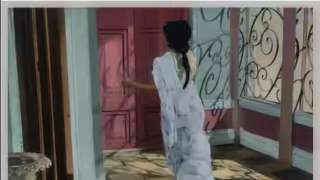MEDIA
Ways of seeing: Atul Dodiya and the cinema
www.hindustantimes.com | February 16, 2023
The paintings in the artist’s ongoing show inspired by various Hindi and Bengali films are not imitative but are the beginning of a conversation between the artist and cinema.
The paintings in this exhibition are inspired by and drawn from images and instances from various Indian films – Hindi and Bengali to be more specific. Guru Dutt, Satyajit Ray and Hrishikesh Mukherjee reign supreme. I say inspired because Dodiya’s rendition though similar to the film image is not imitative or merely intended to reproduce a pre-existing identifiably popular film image. The film image is perhaps the beginning of a conversation between the painter and cinema, a genesis for this project resulting into the paintings on display. While one can trace the painting to a film image, the painting created as a result is an independent art work unto itself and not just derivative. Painting after painting, Dodiya shows his favourite moments from Indian films viewed during the Covid lockdown. These paintings were created between 2020-2022. Perhaps he saw several of these films over and over again during the long lockdown – Anand, Padosan, Mahanagar, Kapurush, Kagaz ke Phool amongst others. In the exhibition note which I read later, the painter confesses that he would freeze some images while watching the film and many of these later turned into the paintings which are now displayed in the exhibition. It is however not an act of simple mimesis which could reduce such an art making endeavour into a didactic exercise. These paintings reveal the reader or the viewer located inside the painter – how he reads film images and what does the selection then tell us about the painter as a curator of film image? Needless to say, it also reveals his long engagement with popular Hindi cinema and helps to reexamine the idea of the popular. Should we only see Anand and Padosan as popular films or are there other sub-texts or intertexts waiting for exploration such as the nurse from Anand who so prominently appears in Dodiya’s rendition from the film. Or the era of photo realism and Hindi film photography? Or the painted Hindi film sets and art direction in cinema which is often underdiscussed? Or several painters who began with painting Hindi film posters and other film paraphernalia? The possibilities of interpretation are immense.
Dodiya has returned to cinema repeatedly in his oeuvre as an artist. One remembers his rendition of Charulata from Satyajit Ray’s iconic eponymous film. There have been other instances too – Hitchcock immediately comes to mind. While watching these paintings, I was repeatedly found asking myself – how does a painter see cinema or the moving image? From the moving image, the painter is also trying to create a still image, a moment frozen in time in his painting. While in the film, the image appears within a chronology or network of images, amidst a story so to speak, in the painting exhibition however, the image stands alone. The viewer then creates a story to read the image or performs recall based on memory but what if you haven’t seen the film, what do you do then? I think the viewer could potentially create a new story and ascribe an invented context to the painting. Also, the arrangement of these paintings at the exhibition creates a new storyline of sorts as if the paintings coalesce to form a film, a fiction of their own.
Another striking element that I noticed and admired greatly in the paintings are Dodiya’s focus on minor objects in the film frame. You can identify the film that the painting alludes to but Dodiya blurs the face of the actor in his paintings, sometimes these characters don’t even face the viewer but what becomes prominent is the presence of the non-human in the frame – furniture, mirrors, architectural detail, light and shadow amongst other elements that constitute a scene. There are other things to see in the frame or may be those appeal to the eye of the painter more than the actor. Often in our film viewing practice, our gaze is directed at the actor in our best attempt to absorb the performance as if that is the only visual engagement cinema offers. The other events or objects in the film frame become prominent or visible in Dodiya’s rendition. Dodiya almost compels you to look at the objects which you might otherwise consider peripheral.
To me, the location of the artist is also seminal in the making of these paintings. This is after all happening in Mumbai where several of these films were made. The artist is viewing, making and also exhibiting the paintings in Mumbai, cinema city. What better way to acknowledge an inspiration and interface between the art and its source?
Prof. Kunal Ray is the faculty of English Literature at FLAME University.
(Source:- https://www.hindustantimes.com/books/ways-of-seeing-atul-dodiya-and-the-cinema-101676441980649.html )

